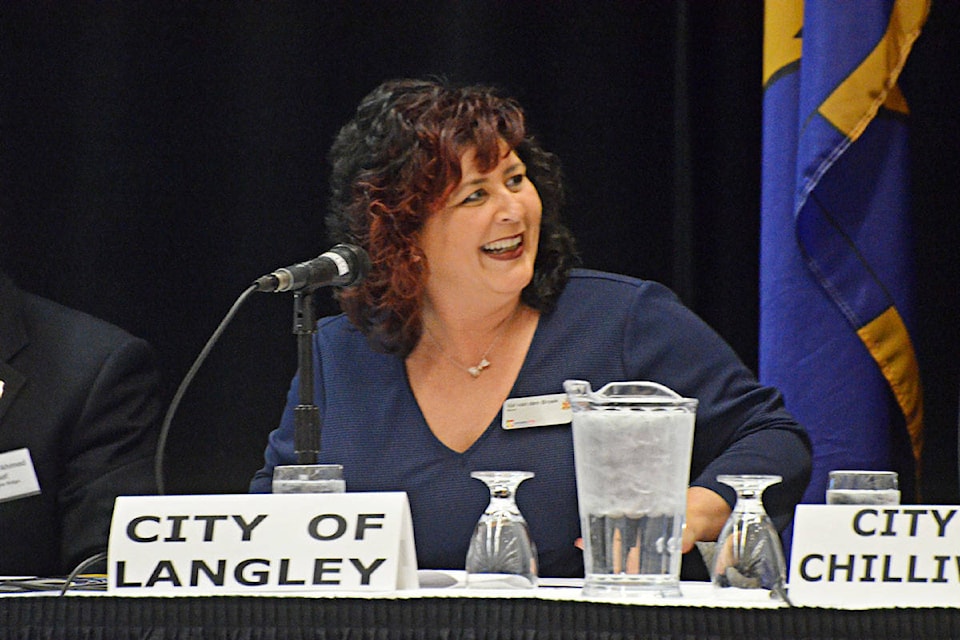Developers from across the Lower Mainland wanted to hear from Fraser Valley mayors on three major topics – density, permits, and transportation.
The Urban Development Institute Fraser Valley hosted mayors and councillors from the Langleys, Abbotsford, Surrey, Maple Ridge, Chilliwack, and Mission for a discussion at the Langley Events Centre on Thursday.
The mayors were asked about how easy it was to develop in their jurisdictions, before an audience composed primarily of developers and builders.
“It’s a challenge for the industry, and it’s a challenge for our own staff,” said Langley Township Mayor Jack Froese, about keeping up with the pace of development permits.
He noted some changes the Township has taken over recent years to streamline the process, including allowing small, simple permits to skip approval by the council in favour of being handled by staff alone.
The City’s new Mayor Val van den Broek touted the local record of quick turnover, including about four to six weeks for most permits. She noted that one major project at the luxury auto mall in the City took just 10 days to process.
Every city in the valley is dealing with massive growth, with Mayor Pam Alexis of Mission noting her city was expected to double in size in the coming years.
“We have run through two record years,” Abbotsford Mayor Henry Braun said of the massive number of new housing developments coming through during the last few years of superheated real estate demand.
Abbotsford has about 1,600 housing units under construction, and 3,600 in the stream to being approved and built.
Every single mayor and councillor on the stage said they were expecting more density in the coming years, whether that’s towers under construction or planned in Surrey and Langley, to an increase in townhouses, duplexes, or infill development on smaller lots in communities further to the east.
Almost every member of the panel spoke of the need to build up rather than out in the future, though many of the communities, including Maple Ridge, Chilliwack, and Langley still have land zoned for single family development.
On transportation, each community is wrestling with more traffic and expects even more issues in the future as density increases.
“Almost 70 per cent of Mission leaves every day,” noted Alexis.
That isn’t as much of a problem in Abbotsford, where Braun said 65 per cent of locals with jobs work in Abbotsford. But he still wants to see Highway One widened, along with 16th Avenue through Abbotsford and Langley.
“We have east-west problems,” he said.
Froese agreed on widening Highway One, but said that isn’t the long-term solution.
“We can’t just continually make the highways wider,” he said.
He added that there are changes coming that are hard to predict, including the possibility of driverless cars.
“What’s that going to look like for our communities?” said Froese.
Ken Popove of Chilliwack said he doesn’t expect to see light rapid transit coming down the side of the highway to Chilliwack “in our lifetime.”
Cycling infrastructure is a big issue in his community.
Langley City is planning now for the eventual arrival of SkyTrain, while building bike lanes as well, said van den Broek. She also called for alternatives to taxis.
“We want to see more ride-sharing,” she said. “We need Uber, we need more of those kinds of things.”
Maple Ridge’s traffic has changed a lot since the removal of tolls on the Golden Ears and Port Mann Bridged, said Coun. Ahmed Yousef.
Some locals have been taking the toll-free Golden Ears south and connecting to SkyTrain to get to Vancouver, rather than trying to drive west over the Pitt River Bridge.
